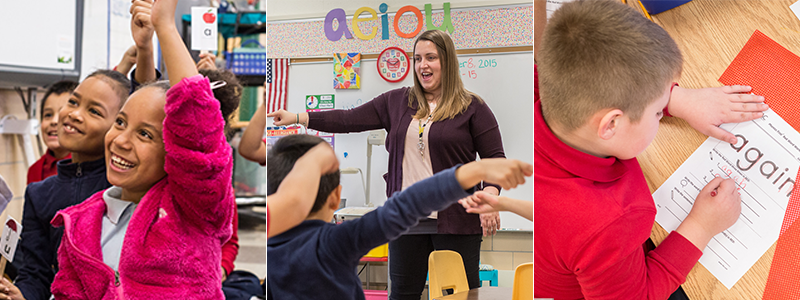Learning to read is not a ‘natural’ process.
Most children must be taught to read through a structured and protracted process in which they are made aware of the sounds and the symbols that represent them, and then learn to apply these skills automatically and attend to meaning. (Moats, 2000, p. vii)
The Orton-Gillingham Approach
In the 1930s, Dr. Samuel Orton, a neurologist, and Anna Gillingham, an educator and psychologist, developed an educational approach based on direct phonics instruction. Many students need help bridging the gap between the sounds of English and their association with symbols. They found that breaking language down into simple, easy to understand pieces and then teaching them using explicit, systematic, multisensory, and structured lessons was effective reading instruction for all students.
Building reading skills is like building a house. Phonemic awareness, phonics, decoding, encoding, fluency and vocabulary skills interlace to create a strong foundation. Each skill adds strength to the foundation of the reading house, until layer upon layer, brick by brick, skill by skill, the final product emerges—a strong, independent reader.
Dr. Orton and Ms. Gillingham’s method is now known interchangeably as either Orton-Gillingham or Multisensory Structured Language (MSL) or Structured Literacy.
The Science of Reading
We now know that, like math and science, there is an order of operations regarding teaching reading to all students. Structured Literacy follows this order of operations effectively providing each student with a structured framework to build their reading foundation.
When readers’ skills are systematically increased through explicit, multisensory, phonics-based lessons, they can then shift mental energy towards comprehending what is being read. Without each skill in place, it’s difficult, if not impossible for them to move to the next step. In other words, until students are able to automatically associate sounds with letters, they won’t be able to decode, let alone understand the text in front of them. Once students are able to associate the words they hear with the words they see, they are then able to comprehend the text.
Brain imaging research has proven that effective, multisensory reading instruction literally reorganizes the brains of struggling readers. New pathways are formed in the brain when students receive phonics-based instruction using direct, explicit, systematic, and multisensory techniques. Through consistent practice, these pathways link and grow stronger until students achieve mastery. The changes in brain imaging after such intervention shows that the brain activity of poor readers increasingly appears more like the brain activity of good readers.
Ensuring Effective Instruction
Brainspring’s Educator Academy Professional Development courses provide teachers with thorough Structured Literacy instruction, curriculum, and tools which make teaching Orton-Gillingham with fidelity easier and fun.
Our programs are designed to arm teachers with the knowledge of how the reading process develops, insight to recognize students who are not developing the appropriate skills to become skilled readers, and knowledge to deliver the program to maximize student success in classroom, small-group, and one-on-one settings.
We are committed to providing participants with the highest level of professional development. Brainspring’s Orton-Gillingham curricula is accredited through both the International Dyslexia Association (IDA) under their Knowledge and Practice Standards for Teachers of Reading and through the International Multisensory Structured Language Education Council (IMSLEC) at their Teaching Level and Instructor of Teaching Levels.
Schedule a phone call with one of our Educational Consultants to learn more and determine how Brainspring is best able to help you bring Structured Literacy to your district.
Ready to learn more?
Check out our accredited professional development course offerings.
Ready to get started?
Register for an online livestream, online self-paced, or in-person course today!
Register for Livestream Courses Register for Self-Paced Courses Register for In-Person Courses

